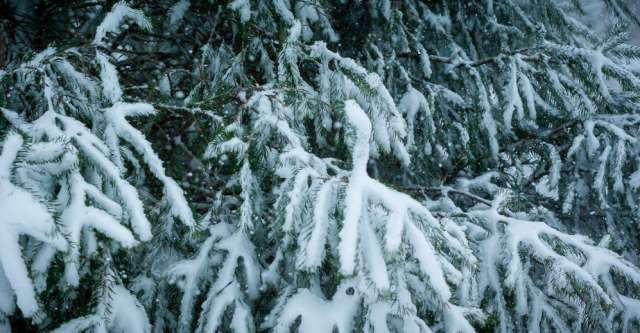A live Christmas tree brings many gifts throughout the season, from the aroma that freshens the air to the elegance of its stature and seasonal decorations. But after the holidays, Missouri Department of Conservation Department (MDC) foresters say you can continue the benefits of live Christmas trees in conservation-friendly ways by regifting them back to nature. This works for live trees, wreaths, and mantlepieces.
Since they come from nature, one advantage of live Christmas trees is that they can be recycled to benefit the environment, wildlife, and even people. There are plenty of after-holiday uses to consider.
Compost
MDC Community Forester Mark Grueber encourages residents,
Most live trees can be chipped and turned into mulch, which you can use to return organic matter to the soil. As the mulch breaks down, it helps keep soil moist and cool during the summer and warmer during the winter [1].
Many municipalities offer mulching services, where residents can drop off their trees and return later to collect the mulch. If homeowners do not use it, the mulch might be used in public works projects to benefit the community.
Along the same lines, gardeners can cut boughs and branches from their trees and place them over perennial beds to help protect them from frost and snow. Pine needles are waxy, making them very moisture—and mold-resistant.
Wildlife
Live Christmas trees can also be used as a holiday gift to wildlife. They are great for habitat. If you place them in a quiet corner of your yard, they provide cover for wildlife. You can stand them up and place bird feeders on them for winter feeding. Those with larger areas of property might also use the used trees to build brush piles for wildlife, like rabbits.
Crafts
Additionally, there are crafts that use post-holiday trees. Many ideas can be discovered online. The branches can be used as part of a potpourri mix or woven into an after-holiday wreath.
Fish
Property owners with ponds can sink used trees to help create homes for fish. The trees benefit many fish, including largemouth bass, bluegill, redear sunfish, and crappie.
Since these fish typically spawn in shallow water, MDC recommends tying the tree to a cement block and submerging it at four to seven feet deep. This gives emerging fish easy access to the cover. There is no need to cut it up; the entire tree is best for creating fish hideaways. Of course, you do need to remove all traces of decorations, tinsel, or garlands. Since the underwater habitat will concentrate fish, place the tree so you can easily cast nearby, and you might see a boost in your catch rate.
Do Not Do
One thing you should not to do with a Christmas tree is burn it in the fireplace. Evergreen needles contain nitrogen and substances called terpenes, which are highly toxic when burned, making the smoke unsafe to breathe. Burning coniferous trees can also build up flammable, corrosive creosotes inside a chimney. Additionally, evergreen needles might cause sparks and fire danger in your home.
A live Christmas tree provides enjoyment during and after the Christmas season. It also benefits people and wildlife.
Notes:
- ^ {MDC forester suggests ways to {\textquotedblleft}regift{\textquotedblright} live Christmas trees to nature} (go back ↩)

